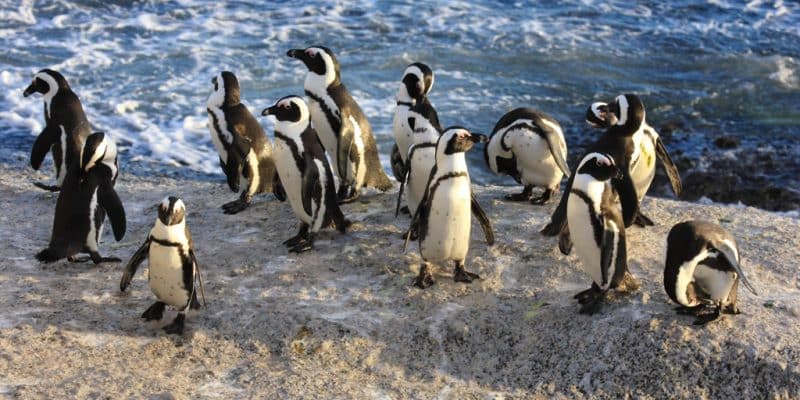The South African government has announced fishing restrictions for 10 years. The aim is to halt the decline of the Cape penguin, a species endemic to South Africa and Namibia that is in danger of extinction due to overfishing and other human activities.
The news has been widely welcomed by environmentalists in South Africa. At a press briefing in Pretoria on Friday 4 August 2023, the South African Minister for Forestry, Fisheries and the Environment announced fishing restrictions to halt the decline of the African penguin. “The African penguin is critically endangered. If nothing is done to remedy this situation, given current rates of population decline, science tells us that these emblematic creatures could be extinct by 2035”, laments Barbara Creecy.
This is why, “following the report of the Export Assessment Group, I have taken the decision to implement fishing restrictions in the waters surrounding penguin colonies for a minimum period of 10 years, with a review after 6 years of implementation and data collection”, says the Minister. The restrictions concern the penguin colonies on Dassen Island, Robben Island, Stony Point, Dyer Island, St Croix Island and Bird Island.
Read also- SOUTH AFRICA: controversy surrounding a new TotalEnergies gas project
“If, over the coming weeks or months, the sectors concerned by the report reach an agreement on fishing restrictions, these will be implemented as and when they are approved”, explained Minister Barbara Creecy. She goes on to say that if no other proposals for fishing restrictions are presented before the start of the 2024 fishing season for small pelagics (short-lived fish such as sardines, anchovies, sandeels, herring, etc.), the current provisional restrictions will be maintained until the end of the 2033 fishing season and will be reviewed in 2030, after six years of implementation from the start of the 2024 fishing season, i.e. 15 January.
The South African Department of the Environment has reached this decision because the African penguin is on the brink of extinction. The species, which is endemic to South Africa and Namibia, has declined from over a million breeding pairs to around 10,000 pairs over the last century. In addition to overfishing, the decline of this bird species is attributable to maritime traffic, the associated noise and vibrations, pollution and the degradation of nesting habitats.
Jean Marie Takouleu







